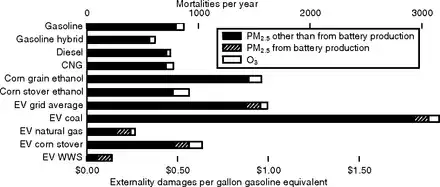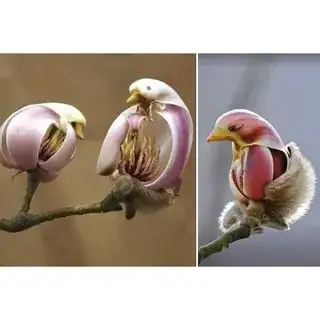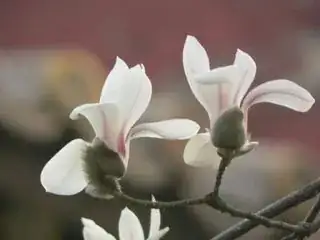No, I do not believe that there is a magnolia flower that looks like a bird. First, I will mention a viral tweet that was sourced from an (unlicensed) image appearing on a Chinese state media company's light online entertainment page. Next, I will describe why the image doesn't make sense from the point of view of evolutionary biology. Finally, I will suggest what the true source of the image is.
There is a viral tweet from @ScienceGirl. She said that this is her source, Meet bird-shaped Magnolia flowers via CGTN. CGTN is Chinese state-owned media of the tabloid variety. Yes, there are tabloids everywhere.
Let's start with the theory of evolution as a given. Genetics and reproduction can result in maladaptive outcomes of reproduction, but those maladaptive progeny are unlikely to flourish or be reproductively successful.
Mutations happen producing variations in flowers. Some are more appealing as they bud to birds that eat plant buds, and others less so. The ones that look less appealing have an evolutionary advantage (get eaten less, or not at all). These are very pretty-looking. They seem to have no evolutionary advantage based on their appearance.
The particular mechanism, of plants mimicking animals, is rather odd though. How would plants know what animals look like?! Plants aren't sentient. The Audubon Society was prompted to write about it by redditors in 2019: Did This Plant Evolve to Look Like a Bunch of Hummingbirds? A photo of a strange Australian flower has Redditors proposing all sorts of scientific hypotheses.:
On Reddit, Whitehead also shared a photo of Crotalaria cunninghamii
from an angle where the hummingbird resemblance is harder to see. He
then linked to a 2016 paper published in Austral Ecology where
researchers concluded that the species' pollination traits favor birds
like honeyeaters, as well as rodents. This, along with the important
fact that there are no hummingbirds in Australia, adds further support
to the adaptation angle.
I wasn't sure how to interpret that.
I performed an exhaustive reverse image search, and as OP said, found nothing reputable to support the idea that such flowers on the Yulan magnolia exist. Finally, I found the following on reddit, Meet the bird-shaped Yulan Magnolia flowers. Yulan Magnolia blossoms appear to look like little birds, and this response with 91% likelihood:
These particular images came from r/photoshopbattles
This was adequate to convince me (although not a rule out) that there are Yulan magnolias in China, but they do not look like birds.



